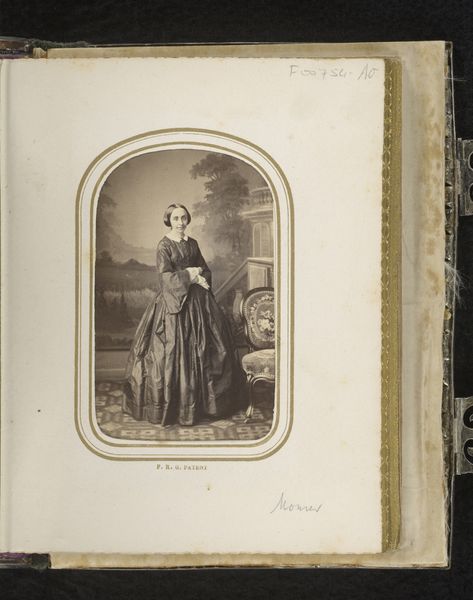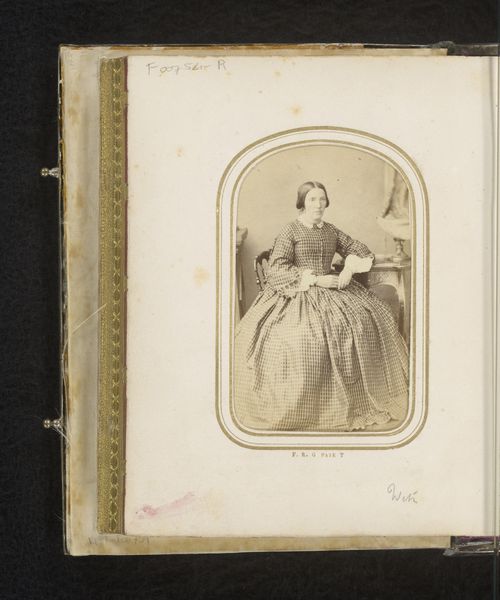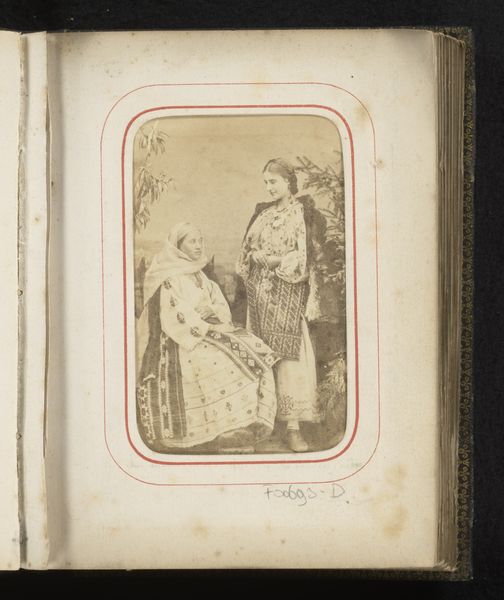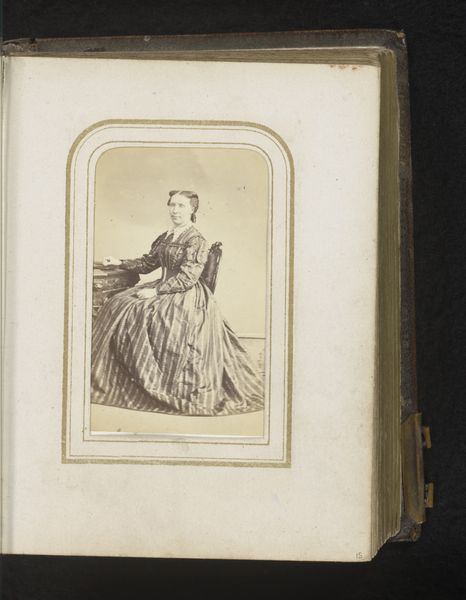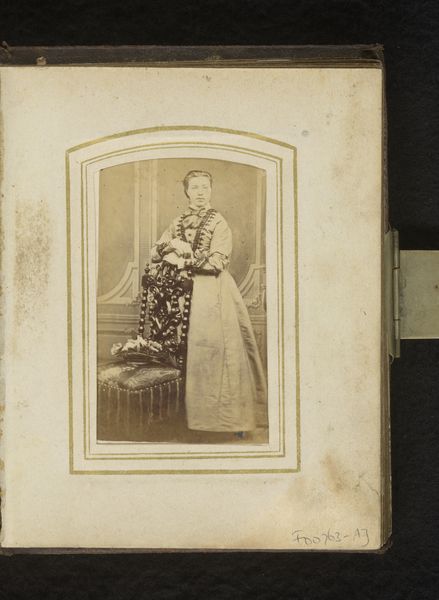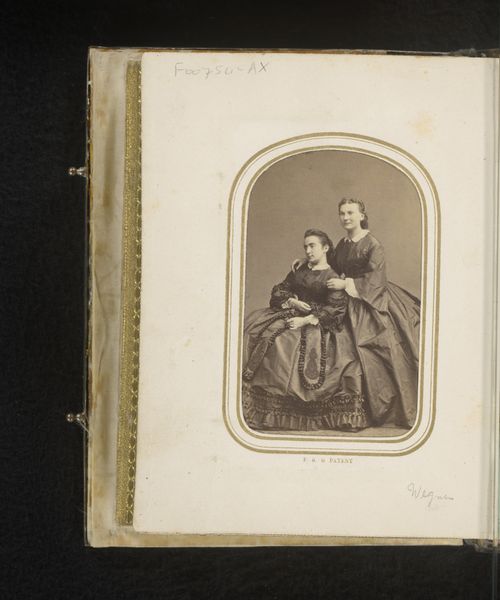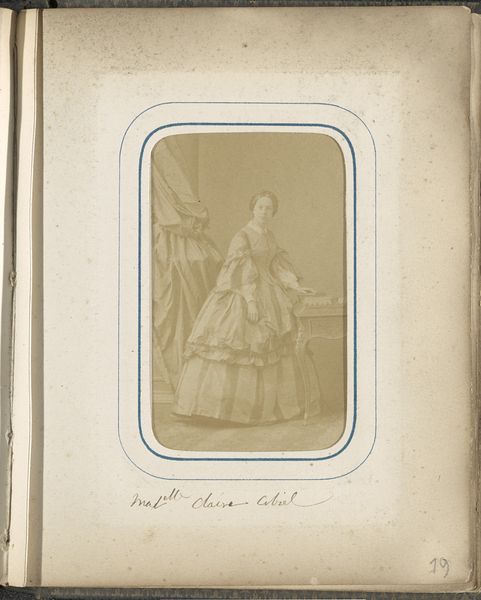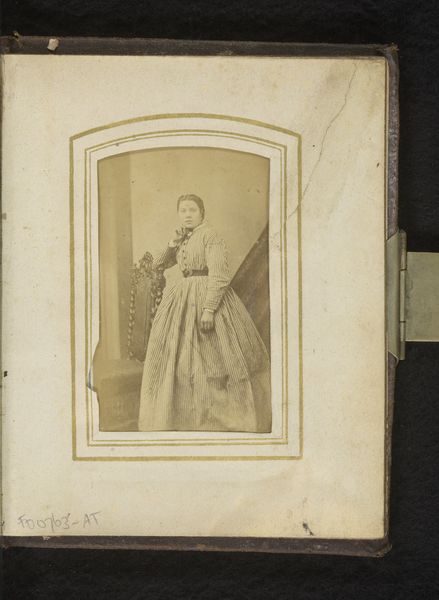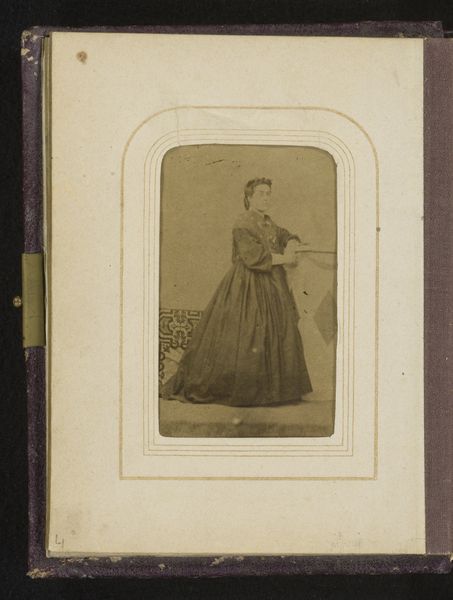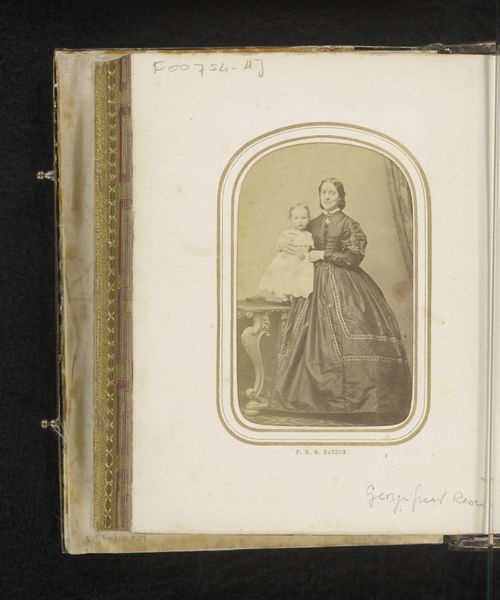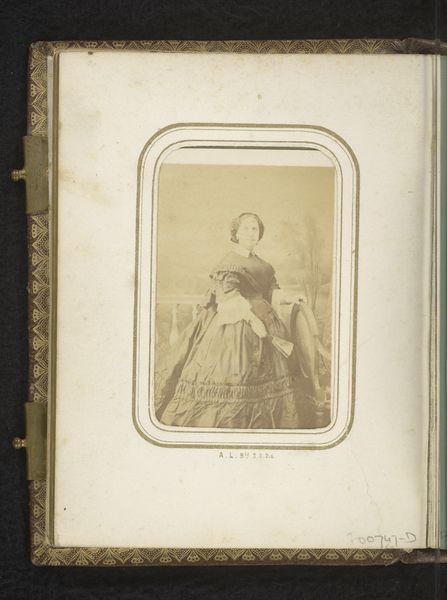
Fotoreproductie van een schilderij van een staande vrouw in Roemeense klederdracht 1870 - 1890
0:00
0:00
carolpoppdeszathmari
Rijksmuseum
photography
#
portrait
#
photography
#
realism
Dimensions: height 85 mm, width 52 mm
Copyright: Rijks Museum: Open Domain
Curator: Welcome! Here we see a photogravure print titled “Fotoreproductie van een schilderij van een staande vrouw in Roemeense klederdracht” by Carol Popp de Szathmari, sometime between 1870 and 1890. Editor: My first thought is one of gentle stillness. The soft focus, the subdued tones – it creates this sense of quiet contemplation. It feels… removed, almost romantic in its depiction of tradition. Curator: Absolutely. Szathmari, a pioneer of Romanian photography, frequently documented Romanian traditions. The klederdracht, the traditional clothing, is dense with visual cues to identity. Can you elaborate on the symbols, or perhaps, cultural history? Editor: I read the image in layers. We see the woman in her elaborate folk costume: her social standing immediately declared through fabric, pattern and the tailoring of each textile element. It speaks volumes about cultural heritage at the time, perhaps of attempts to record or safeguard traditional Romanian culture amidst societal shifts. Curator: The patterns and details – the embroidery, the headdress, the drape of the shawl – it evokes an intricate language of belonging. Those shapes repeat throughout Romanian folk art, serving as powerful visual reminders. Do you consider them timeless? Editor: Well, tradition is never truly timeless. It’s a living, breathing thing that is constantly reinterpreted. So while elements might endure, their significance shifts and changes with evolving social and political landscapes. The realism makes it timeless. Curator: Indeed, realism adds an undeniable layer. But isn’t photography as a medium itself caught up in the dance between objective truth and subjective interpretation? It holds space between worlds. Editor: Precisely. And Szathmari, consciously or unconsciously, captured not just an image of a woman but a moment in the ongoing negotiation of Romanian identity. In its soft stillness it speaks so very loudly of change, identity and memory. Curator: It truly does invite us to reflect on how the past shapes the present, visually weaving ancestral threads through time. The image carries its message from generations before us, while creating dialogues for those still to come.
Comments
No comments
Be the first to comment and join the conversation on the ultimate creative platform.


